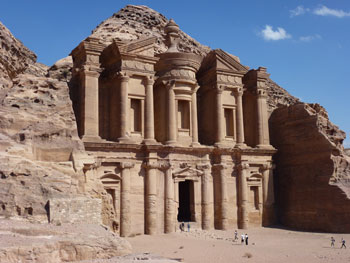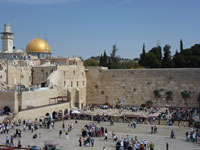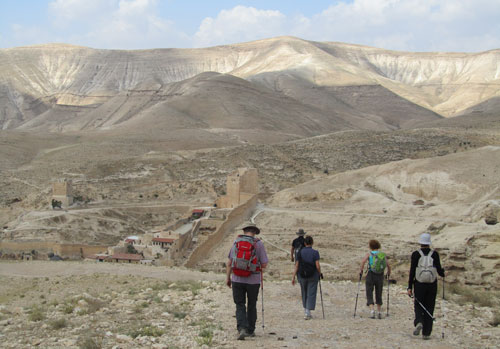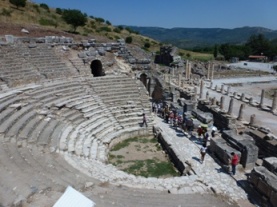Land of the Pharaohs

For lovers of history, Egypt is one of the great travel destinations in the world. Home to one of the oldest and greatest civilisations in history, the ancient Egyptians have bestowed some of the best cultural and historic heritage on earth, including some of the world’s most iconic landmarks. The 2011 revolution and the ongoing clashes and unrest that have since marred the country have had a hugely negative effect on tourism, with visitor numbers dramatically down on pre-revolution levels. What’s bad for Egypt’s tourist industry however is great for the traveller who ignores the off-putting headlines and chooses to visit the country now – the major sites and attractions of Egypt are far less crowded than before, offering a much more rewarding experience of this unique destination. I recently visited the Nile Valley for a brief introduction to ancient Egypt, largely as part of an Explore tour.
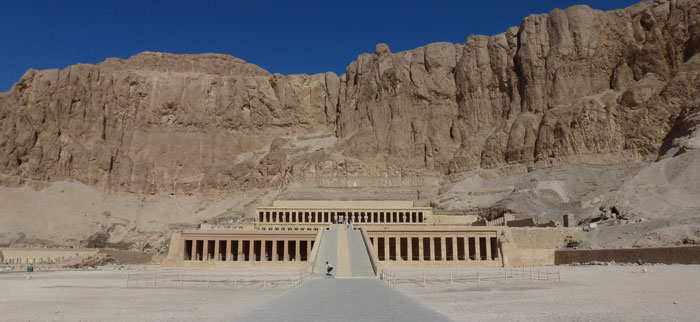
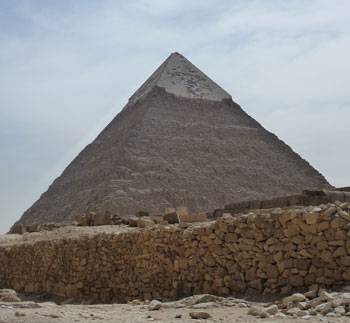
The Dawn of History
Ancient Egypt made its first major mark on world history with the building of the pyramids of Giza around 2500 BCE and it’s at the pyramids that most people begin their Nile Valley exploration. So much has been written about the majesty of the Great Pyramids - their astonishing precision, breathtaking scale and remarkable longevity – that little more needs adding. The experience of visiting the pyramids however doesn’t quite match the magnificence of the structures themselves. Perhaps the most notable, and noted, aspect of the site is its location adjacent to the modern city of Cairo. It’s a bizarre sight to suddenly see these ancient structures come in to view between some high-rise 20th century buildings. The proximity of modern life does detract somewhat from the experience of seeing one of the great sites of antiquity though – any pre-conceived notions of ancient monuments rising from the desert sands are soon dashed.
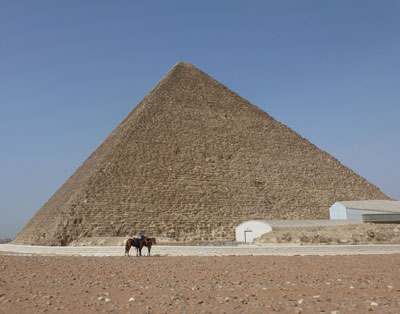
The closeness of the city also contributes to the other major problem with visiting the pyramids – the endless hassle from hawkers, those offering horse and camel rides and fake ticket inspectors and tour guides that will challenge even the most hardened traveller. It’s a constant battle to preserve both your sanity and your cash – as our tour guide reminded us: “It’s very cheap to get on a camel, but very expensive to get off!”. If anything, the diminished tourist trade seems to have exacerbated the situation as the locals are more desperate than ever for business, however counterproductive their methods seem to be. However despite all this, the Pyramids are still a must see attraction and a true wonder of the world. The Great Pyramid of Khufu is the oldest, tallest and most elegantly built of the three major pyramids at Giza and it is here where most tourists focus their visit, along with the ever attendant local “businessmen”. Nevertheless it’s fairly easy to escape the crowds and attain a measure of (relative) seclusion – the far side of the Second Pyramid of Cheops and the smaller Pyramid of Menkaure can be bereft of tourists and almost free of camel touts, offering peace and some great photo opportunities.
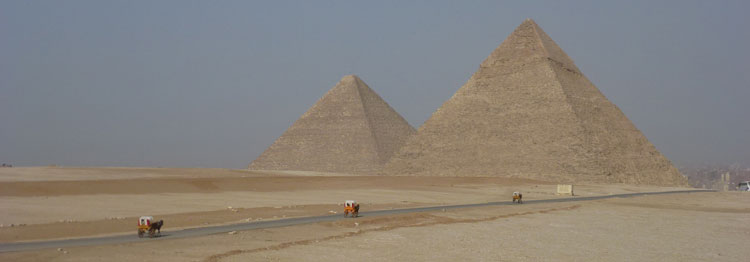
The interiors of the Pyramids, a series of narrow and cramped passageways leading to the pharaoh’s burial chamber, are a must do for anyone without claustrophobia or a bad back. With the reduced tourist numbers, it’s quite easy to get the extra tickets required for access (both major pyramids are currently open). Though the chambers are rather bare, with only the empty granite sarcophagus for decor, it’s an extraordinary feeling to be in the heart of the Great Pyramids of Egypt, in rooms over 4,500 years old stretching back to the dawn of recorded history. With a bit of luck and patience, it’s quite possible to end up alone in the chamber – an eerie but unforgettable experience. Another highly recommended extra is the boat museum at the side of the Great Pyramid, which contains a superbly renovated wooden solar barque used to carry the pharaoh to the afterlife.
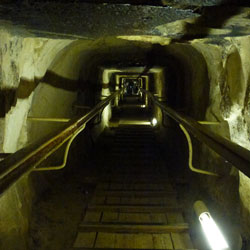
Entering the Great Pyramid
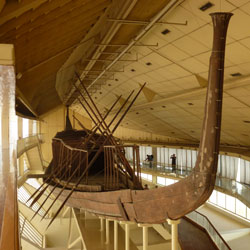
The reconstructed Solar Barque
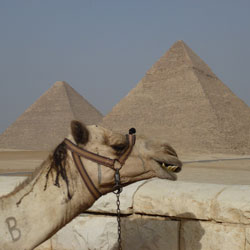
"Taxi?"
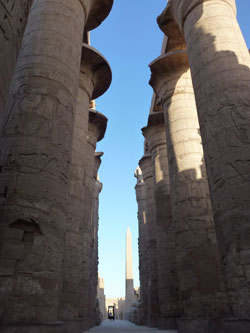
The heart of ancient Egypt
While the pyramids are undoubtedly ancient Egypt’s most famous site, the spiritual and cultural heart of the civilisation at its height in the Middle and New Kingdom’s was at Thebes, modern day Luxor. Known as the world’s largest open-air museum, Luxor is a treasure trove of historical sites, in the major temples of the East Bank and the tombs of the pharaohs on the West Bank. At its centre is the magnificent Karnak Temple, a sprawling site continuously developed by all the great pharaohs over 1500 years and the first stop for most visitors. In various states of preservation, its most impressive elements remain the famous Great Hypostyle Hall (right) with its enormous, closely spaces and richly decorated columns and the breathtaking granite Obelisk of Hatshepsut. You could spend days exploring Karnak, but there’s so much more to see in Luxor alone, so we quickly moved on.
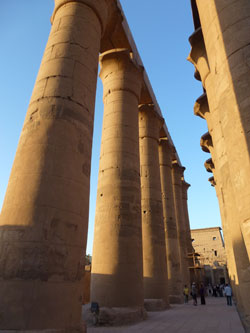
Often overlooked, Luxor Temple in the centre of town mightn’t have the same scale as Karnak but it’s just as impressive, with many well preserved elements packed into a much smaller space, a haven of peace surrounded by the noise and bustle of modern Luxor. The great columns of Amenhotep III’s colonnade (left) and sun court look particularly spectacular at sunset or lit up at night (below). A new addition to the landscape of the East Bank is the beginning of the renovation of the Avenue of the Sphinxes, the direct sphinx-lined route between the two major temples which was used for the processions of the great Opet Festivals. How much of this route will be restored remains to be seen, given the competing priorities of archaeology and the transport routes of the present day town.
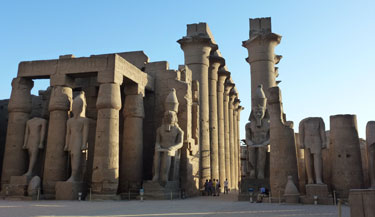
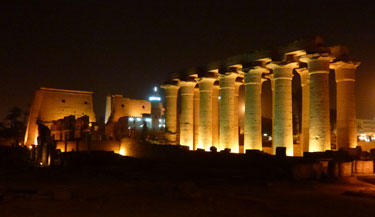
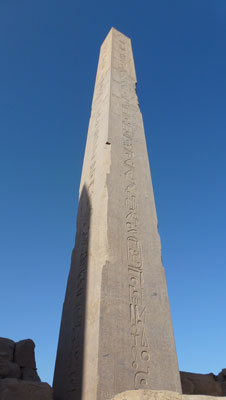
By the time of the New Kingdom, the pharaohs had realised that great funerary monuments like the pyramids were simply very helpful signposts to the robbers which would inevitably empty the crypts of their precious and valuable contents. To combat this they designed vast and elaborate tombs hidden underground in the desolate Valley of the Kings on the West Bank. However with the exception of Tutankhamen, an unremarkable leader whose relative obscurity would ironically make him the most famous pharaoh of them all, this was an ultimately futile effort as most were still eventually stripped of their riches. Nevertheless the intricate hieroglyphs and images left on the walls of the tombs offer fascinating insights into ancient Egyptian life and the West Bank tombs are a highlight of any visit to the Nile Valley. Multi-entry tickets allow you access to your choice of three tombs, while additional tickets are required for access to the famous tomb of Tutankhamen and the superb tomb of Ramses VI.
No trip to the West Bank would be complete of course without a visit to the Temple of Hatshepsut, the great female pharaoh, and probably Luxor’s most famous site. The temple has been extensively renovated and lies in a spectacular location, built into the bottom of a sheer rock face, allowing a glimpse into the grandeur and ambition of ancient Egypt at its zenith. Hatshepsut’s Temple is best visited early in the morning, to escape the tourist hordes who cover the site (and your photos) and avoid the worst of the midday sun at what’s reputedly one of the hottest places on earth.
Ptolemies on the Nile
It’s an irony of ancient Egyptian archaeology that many of the best preserved monuments are from the Late Period (unsurprisingly given the vast timescales involved), long after the zenith of Egyptian civilisation and when the country was under Greek, rather than native, control. The Ptolemaic dynasty, descended from Alexander the Great’s general Ptolemy who ruled Egypt after his death, ruled for almost three centuries from 300-30 BCE and bestowed some of the finest temples in Egypt. While their initial adoption of Egyptian culture and religion may have stemmed from political expediency as new foreign rulers of a proud and independent people, there is no doubt that they became fully immersed in Egyptian life and built temples dedicated to some of the greatest gods in the classic architectural style.
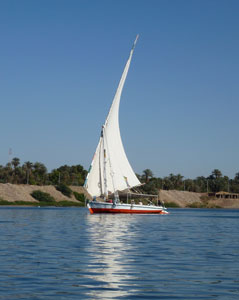
The best examples of these Late Period temples lie in Upper Egypt between Luxor and the southern frontier town of Aswan. While it’s possible to get between these sites by plane, train or on road, the only real way to see Upper Egypt is on the Nile. And if you’re doing a Nile trip, then sailing aboard a traditional felucca boat is a far more authentic and enjoyable experience than taking one of the large cruisers which power their way up and down the river. On this trip, our group hired two feluccas to sail for three days between Aswan and Luxor, the local Nubian crew expertly using the current and changeable winds to navigate slowly north. Given the intense nature of travelling in Egypt, this was a supremely relaxing and much needed break from the hassles of city life, with the heat of the Egyptian sun blissfully tempered by the river breeze. Facilities on board, and at the riverbank wild camp sites, were basic to say the least, but we were more than happy to sacrifice our creature comforts for the chance to experience life on the Nile as it’s been lived for centuries.
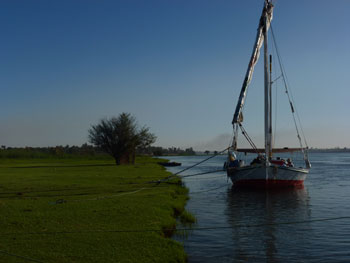
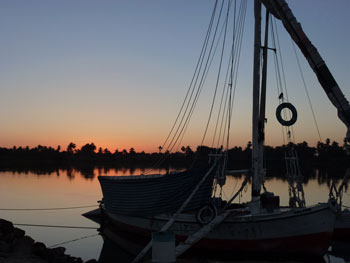
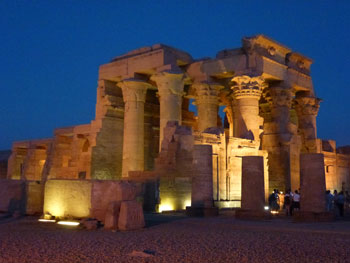
We reached the first temple at Kom Ombo as the sun was setting on the second day of the felucca trip. With most tour groups safely back aboard their floating hotels, it was a perfect time to visit, the dusk light offering a beautiful perspective on the temple ruins (right). Unique in being dedicated to two gods, Horus and the crocodile god Sobek, the temple has a wonderful riverside location and well preserved reliefs. And luckily for those travelling by felucca and camping by the river, the only crocodiles still in the area are the ones mummified in the adjacent museum.
A further day’s sailing north brought us to the magnificent Temple of Horus at Edfu. Second in size only to Karnak, this is an excellently preserved temple, partly because it was buried in sand for centuries. At the temple’s entrance lies a spectacular 36 metre high pylon, almost completely intact, with huge carved reliefs of Ptolemy XII. A series of courts, hypostyle halls and chambers leads to the Sanctuary of Horus which contains the granite shrine which once contained the gold statue of Horus and a replica of the wooden barque used to transport the statue for processions. Almost 200km to the north at Dendara, but with the sanctuaries (apparently) directly aligned, lies the Temple of Hathor, the wife of Horus. During the yearly festival, the statue of Hathor at Dendara would be taken south to visit Horus at Edfu to mark their sacred marriage. Dendara is well off the tourist trail so can be explored in almost complete isolation. It’s a fascinating temple, noted for its underground crypts, access to the roof along elaborately decorated stairways and the intricately decorated and colourful columns and ceilings of its hypostyle hall.
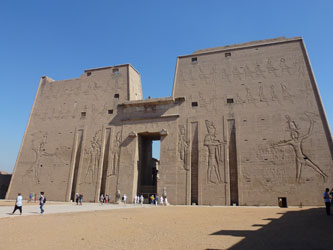
Pylon of the Temple of Horus at Edfu
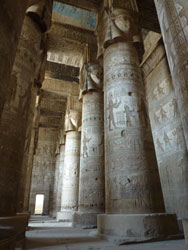
Hypostyle Hall at Dendara
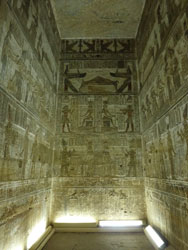
Temple of Hathor at Dendara
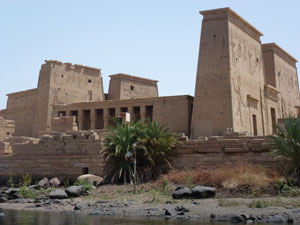
Back at Aswan, the Temple of Isis at Philae (left) is reached on a short boat trip from the town. Stunningly located on the small island of Agilika, this is one of the great attractions of ancient Egypt and remained an important centre of worship right through the Roman times until the 6th century AD. What’s remarkable about the Temple of Isis is that it’s currently located on a different island to which it was built. When the Aswan High Dam was constructed it was due to completely submerge Philae Island and the temple, so a UNESCO-funded project disassembled the who temple stone by stone and reconstructed it in its present location on the nearby Agilika Island, a remarkable feat of preservation.
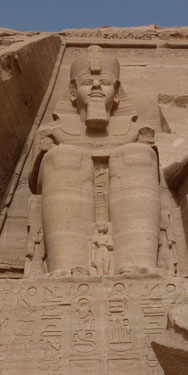
The greatest pharaoh of them all
Philae Temple of course wasn’t the only ancient site threatened by the Aswan Dam however. A UNESCO-sponsored internationally-financed campaign salvaged 14 temples from the waters of Lake Nasser, with ten of these being reconstructed on higher ground. The most famous example, and astonishing reconstruction, is the Great Temple of Ramses II at Abu Simbel, 280km south of Aswan at ancient Egypt’s frontier with Nubia. The piece by piece dismantling of the temple, its expert reconstruction on higher ground and the landscaping to almost exactly recreate its original mountainside location was a stunning feat of engineering, almost as impressive as the workers and artisans of the New Kingdom who created the original temple.
Ramses II is regarded as one of the greatest pharaohs in Egyptian history, ruling for a remarkable 66 years. His military conquests, particularly against the Hittites at the Battle of Kadesh in 1274 BCE which is commemorated in the reliefs of Abu Simbel, forged a large Egyptian empire abroad. At home, he ruled at the height of the New Kingdom’s power and prestige and ensured his legacy with outstanding additions to Karnak and Luxor Temples in Thebes, to the beautiful temple at Abydos started by his father Seti I and of course with the construction of the breathtaking temples at Abu Simbel between 1274 and 1244 BCE.
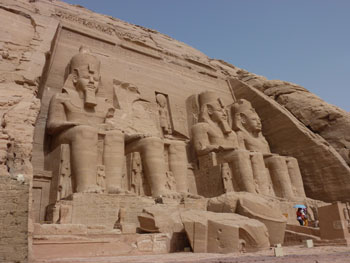
Abu Simbel can be reached from Aswan by air or by road (with a predictably large difference in cost between the two options). Our group opted for the latter which meant a 3am rise to join the vast police-escorted convoy heading south – security concerns mandate the armed escort although the way the convoy dispersed on route suggested a negligible threat. The nature of the convoy did mean however that with numerous groups visiting at once, Abu Simbel would be one of the most crowded temple visits we had in Egypt, an unavoidable situation (if not staying in Abu Simbel overnight), though this was one location where having people in your temple photos leant a much needed perspective to appreciate its vast scale.
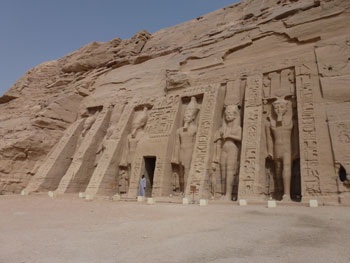
Although the famous entrance to Abu Simbel has been much photographed, encountering first in person is still an astonishing sight (above). The four enormous 20 metre high statues of a seated Ramses II (though the head and torso of one have fallen to the ground) are a monument to the skill of the New Kingdom sculptors, as well as the colossal ego of the pharaoh who commissioned it. The interior of the temple is extraordinary for having been completely carved from the mountain rock, with detailed reliefs of the pharaohs military exploits as well as dedications to the gods. The adjacent Temple of Hathor (right), dedicated to Ramses’ wife Nefertari, is only slightly less dramatic in scope, fronted by unusually equal sized carved reliefs of the ruling couple. Before heading on the long journey back to Aswan, be sure to step back to the water’s edge to take in an overview of the site and appreciate this astonishing testament to one of history’s great civilisations.
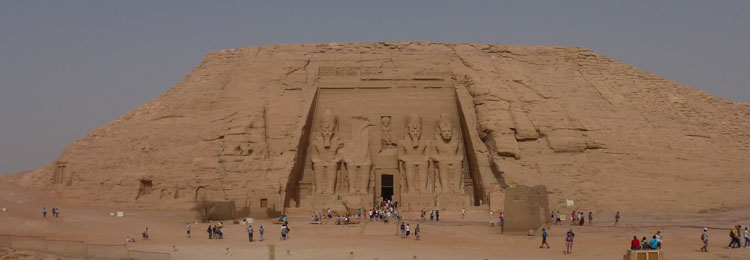
A timeless attraction
The Nile Valley has been attracting travellers in the modern age since Thomas Cook first started organising tours in the 1880s. Despite this, exploring the glorious legacy of ancient Egypt remains as exhilarating for first-time travellers today as it must have been in the 19th century or in any era back to the time of Herodotus. The uncertainty and unrest of the recent revolution and its aftermath may have deterred large numbers of travellers, but for now the Nile Valley is safe to visit. Given the reduced tourist numbers, it’s a perfect time to explore one of the great civilisations of human history.
I travelled to Egypt on Explore's 10 day Nile Felucca Sailtrek tour, which offers a great value introduction to ancient Egypt including a wonderful 3 day felucca trip. Additionally I took a day trip to Abydos and Dendara from Luxor with the highly recommended Aladin Tours at the Nefertiti Hotel.
Egypt has a well established tourist infrastructure, making it relatively easy to explore the country by independent travel. However given the endless and exhausting hassle you will receive at every stop and the appreciable distances between towns/cities and many of the major sites, it’s well worth considering an organised group tour. These are great value for money, offer qualified Egyptologists to introduce ancient Egyptian history and explain the significance of the sites and make your visit to the Nile Valley something to be enjoyed rather than endured. Choose from a range of Nile Valley tours from the leading adventure travel companies on our Egypt tours page.
For more information on travel to Egypt including tours, other travel highlights and trip planning information, see our country guide.
Related articles:
|
Exploring the rock-carved city of Petra, one of the greatest travel destinations in the world, 200 years since its rediscovery. |
Two captivating and contrasting highlights of Israel - the fascinating old city of Jerusalem and the stunning landscapes of the Negev Desert. |
|
Warm welcomes, beautiful landscapes and surprising diversity on a new Wild Frontiers walking trip in the historic land of Palestine |
Our guide to one of the greatest Roman sites in the world, renowned for its spectacular Library of Celsus and Great Theatre. |
Comments
Roddy, what a wonderful write up of our trip to Egypt and great photo's. thank you for taking the time to put it together and for sending it to me and Fergus. regards Sue
Sue Ridely Anderson 2nd Jun 2013
Submit a comment on this article



